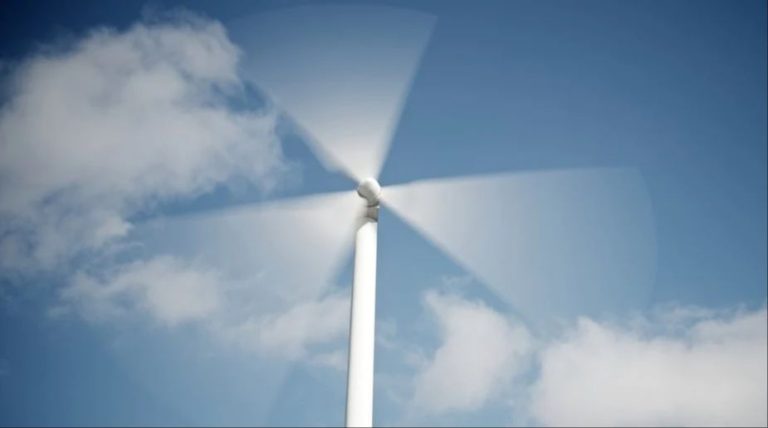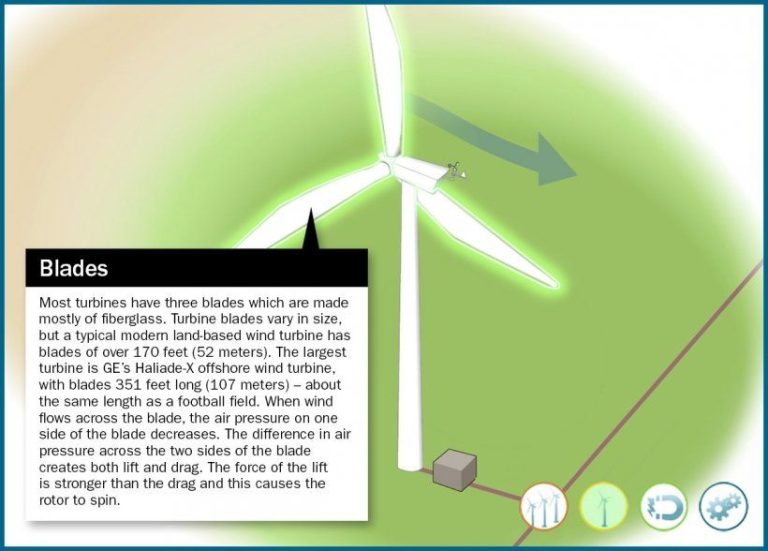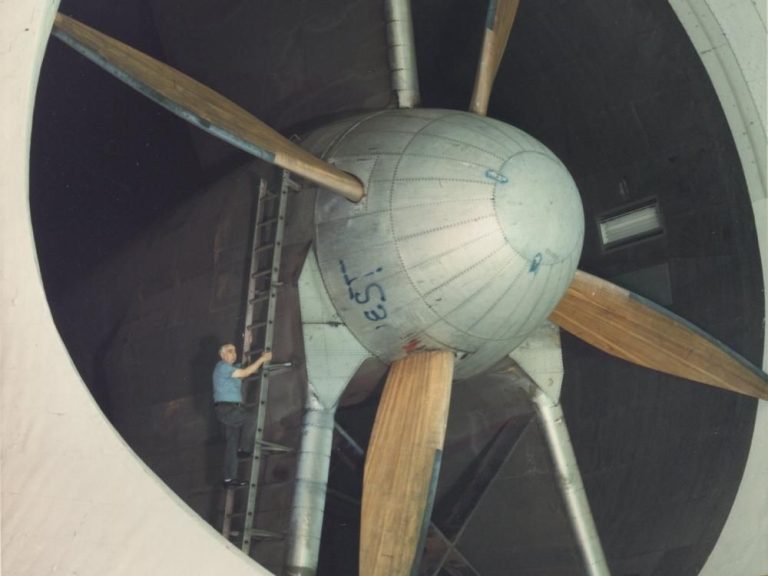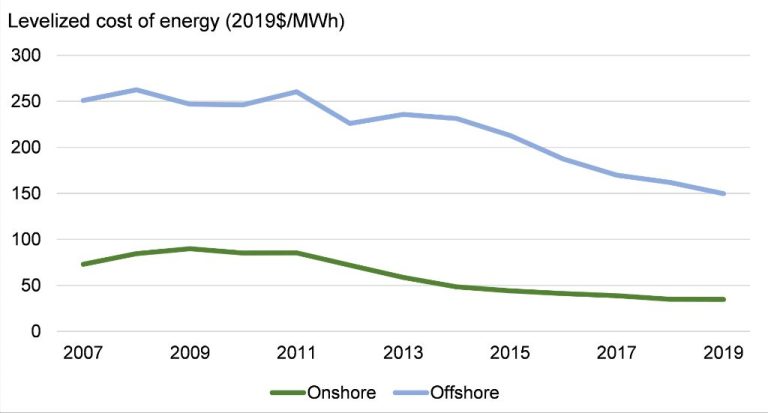How Far Away Can You Hear Wind Farms?
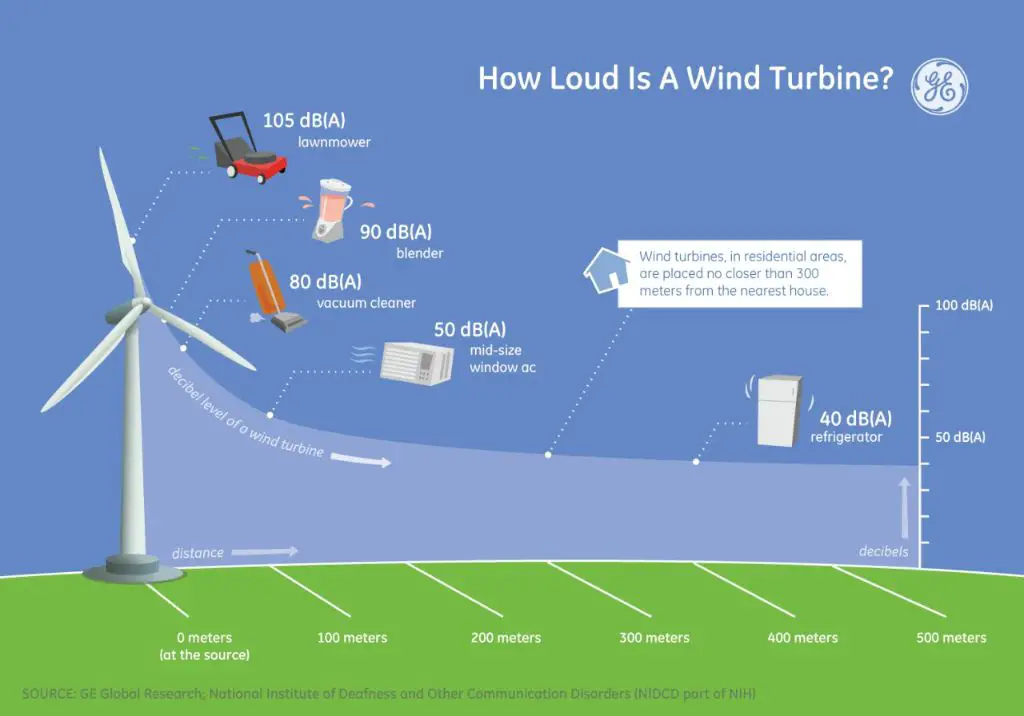
Wind farms are an increasingly common source of renewable energy around the world. However, as more wind turbines are installed near residential areas, there have been growing concerns about the potential noise impacts on communities living close by. Wind turbines produce sound from mechanical and aerodynamic sources, such as the spinning gearbox and blades. The noise is often described as a rhythmic swooshing or pulsing sound.
This article provides an overview of wind turbine noise characteristics, factors affecting noise propagation, recommended noise limits, and mitigation strategies. The goal is to inform readers about the science and research behind wind turbine acoustics, and provide insights on how noise can be reduced to ensure wind energy development is considerate of local residents.
How Loud Are Wind Turbines?
Wind turbines generate noise from mechanical and aerodynamic sources. Mechanical noise is produced from the generator, gearbox, yaw motors, and cooling fans. Aerodynamic noise is generated when the turbine blades pass through the air, creating a swooshing or whooshing sound.
The noise level of a wind turbine depends on its size and design. According to the U.S. Department of Energy, land-based utility-scale wind turbines produce sound levels around 35-45 decibels when heard from 300 meters away (https://windexchange.energy.gov/projects/sound). For comparison, a quiet bedroom measures around 30 dB while normal conversation is about 60 dB.
Modern wind turbine designs have reduced noise levels substantially. GE reports their latest onshore turbines produce sound as low as 105 dB at the source, and normally below 45 dB at a distance of 350 meters. At this level, the noise blends into the background (https://www.ge.com/news/reports/how-loud-is-a-wind-turbine).
What Factors Affect Noise Levels?
There are several key factors that affect the noise levels produced by wind turbines:
Turbine size – Larger wind turbines with longer blades and higher power outputs will naturally produce more noise than smaller models, as the energy conversion process creates audible mechanical and aerodynamic sounds. Modern utility-scale wind turbines are much larger and more powerful than earlier generations.
Number of blades – Wind turbines with fewer blades (e.g. two) are inherently noisier than those with three blades, as there are fewer blade rotations per minute for a given power output. Most modern turbines utilize three slower-moving blades rather than two, reducing noise.
Wind speed – Faster wind speeds drive the turbine blades to rotate more quickly, which increases the volume of mechanical noise. Sound output rises by 5-10 decibels as wind speed doubles. Turbines often have controllers to optimize blade angles and rotation speeds based on wind conditions. [1]
[1] https://windexchange.energy.gov/projects/sound
Noise Propagation Principles
Noise levels naturally decrease with distance from the source as the sound energy spreads out. As sound waves travel away from the source, they spread out over an ever larger area, decreasing the sound pressure level. Specifically, sound pressure level decreases 6 dB for every doubling of distance from a point source in free field conditions, known as the inverse square law. For example, if a wind turbine produces 95 dB of noise at 50 feet, the sound level will reduce to 89 dB at 100 feet, 83 dB at 200 feet, and so on.
In addition to geometric spreading, the noise levels also decrease due to additional factors like ground absorption, atmospheric absorption, foliage, temperature gradients, and shielding by barriers. High frequency sounds especially are readily absorbed by the air as well as foliage. According to The Physics Classroom, if a 1000 Hz tone is generated, it may be detectable at distances up to 1 km, whereas a 10k Hz tone may only propagate 100-200 m before becoming inaudible.
In summary, noise from wind turbines and other sources attenuates naturally over distance. The major factors affecting this attenuation include geometric spreading, atmospheric absorption, ground absorption, and shielding.
Noise Modeling Studies
Noise modeling is used to predict the sound levels that will be produced by wind turbines before they are built. These models take into account factors like the noise emission characteristics of the turbines, topography, ground absorption, weather conditions, and distance from the turbines. The models allow developers and regulators to understand the potential noise impacts of a proposed wind farm ahead of time.
One of the most commonly used noise models is ISO 9613, an international standard that calculates sound attenuation from sources like industrial plants and wind turbines. This model takes into account geometric spreading, atmospheric absorption, ground effect, reflections, screening from obstacles, and meteorological conditions (Josimović, 2023). Other models like NORD2000 and Harmonoise have also been developed to predict wind turbine noise propagation.
While noise models provide estimates of expected noise levels, their accuracy depends on the quality of input data and validity of assumptions. Real world factors like variable weather conditions can influence noise propagation. Therefore, noise measurements from operating wind farms are still needed to verify and refine modeled estimates.
Real World Noise Measurements
Several studies have conducted actual noise monitoring at existing wind farms to measure real world noise levels and compare them to modeled predictions. One extensive measurement study was performed in Germany in order to validate a sound propagation model (Könecke et al., 2022). The researchers took over 1700 noise measurements upwind and downwind from wind turbines at four different wind farms. They found that the actual measured noise levels aligned well with the modeled predictions in most cases. Downwind noise levels were on average 1-2 dB higher than the predictions, while upwind levels matched the model. Overall, the study demonstrated that noise propagation modeling provides reasonably accurate estimations of real world wind turbine noise in most conditions.
McCunney et al. (2014) also performed area noise measurements at three wind farms in Maine with turbines producing 1.5-3 MW of power. Noise levels were monitored out to distances over 3000 feet (914 m) from the turbines. The measured noise levels were found to be consistent with model predictions and below recommended noise limits at all distances. This provides further evidence that modeled wind farm noise assessments tend to reflect real world conditions.
These and other field measurement studies demonstrate that modern modeling practices can predict wind turbine noise emissions within a reasonable degree of accuracy under common operating conditions. While factors like temperature inversions can cause higher than predicted noise on occasion, in general the actual monitored noise levels align with pre-construction models. This helps validate the use of models for noise impact assessments during wind farm planning stages.
Recommended Noise Limits
The World Health Organization (WHO) has developed guidelines on recommended noise limits to avoid adverse health effects from environmental noise exposure. In their publication “Environmental Noise Guidelines for the European Region”, the WHO states that for average noise exposure from wind turbines, sound levels below 45 dB Lden are recommended to prevent health impacts like sleep disturbance, annoyance, cardiovascular effects, cognitive impairment, and hearing impairment (WHO, 2018).
The WHO also has night noise guidelines that recommend less than 40 dB(A) of annual average (Lnight) outside of bedrooms to prevent adverse health effects from nighttime wind turbine noise (WHO, 2018). Their general environmental noise guidelines recommend daytime outdoor noise levels below 55 dB Lden and nighttime levels below 45 dB Lnight.
Some countries and regions have adopted more stringent wind turbine noise limits based on the WHO guidelines. For example, Denmark has a maximum limit of 44 dB for wind turbines, and some states in Australia have adopted 35-40 dB nighttime limits.
Mitigation Strategies
Wind turbine noise can be reduced through various mitigation strategies. One key method is to add anti-vibration systems to isolate and dampen vibrations between the tower and foundation, as vibrations are a major source of turbine noise (For citations, see
Conclusions
In summary, how far wind turbine noise carries depends on several factors. The main factors affecting noise propagation from wind farms are the power level of the turbines, topography and ground conditions, weather, and distance. Under normal conditions, wind turbine noise is generally not perceptible past 1500-2000 feet for smaller 1.5 MW turbines and 4000 feet for larger 2-3 MW utility-scale turbines. However, factors like temperature inversions can allow noise to carry further. Overall though, modern wind turbines produce relatively low noise output compared to other sources. With proper siting and noise limits, wind turbine noise is unlikely to be a major nuisance for communities located a reasonable distance away.
In general, utility-scale wind turbines do not generate noise levels that should be of concern beyond about 0.25-0.5 miles (1500-2500 feet), assuming proper siting guidelines are followed. The noise dissipates quickly over distance. Beyond this range, any noise from wind turbines would be difficult to distinguish from background noise.
While wind farms can sometimes be audible from further away, the overall noise level remains comparable to common urban/suburban soundscapes. With increasingly strict regulations on wind turbine noise limits, and advancements in engineering, modern wind turbines pose little noise disturbance risk to the vast majority of the population if properly sited.
References
National Renewable Energy Laboratory (NREL). “Wind Turbine Noise and Human Annoyance.” 2021.
Larsson, C. and Öhlund, O. “Emissions and Propagation of Sound from Wind Turbines.” Journal of Low Frequency Noise, Vibration and Active Control33.1 (2014): 71-87.
Jakobsen, J. “Infrasound Emission from Wind Turbines.” Journal of Low Frequency Noise, Vibration and Active Control 24.3 (2005): 145-155.
Hessler, D.M. and Hessler G.F. “Recommended Noise Level Design Goals and Limits at Residential Receptors for Wind Turbine Developments in the United States.” Noise Control Engineering Journal 59.1 (2011): 94-104.
Møller, Henrik and Pedersen, Christian Sejer. “Low-frequency Noise from Large Wind Turbines.” The Journal of the Acoustical Society of America 129.6 (2011): 3727-3744.
Van den Berg, G.P. “Effects of the Wind Profile at Night on Wind Turbine Sound.” Journal of Sound and Vibration 277.4–5 (2004): 955-970.

